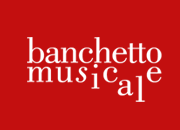September 21, Thursday, 7 pm
St. Catherine’s Church, Vilniaus g.
30
Musique de table
Pearls of Baroque feasts and banquets
BALTIC STATES BAROQUE ORCHESTRA
leader Darius Stabinskas cello
Anna Starr oboe, Australia
Susanne Grützmacher oboe, Germany
Jaroslav Rouček natural trumpet, Czech Republic
Nadja Zwiener violin, Germany
Lāsma Meldere violin, Latvia
Musique de table (Ger.: Tafelmusik,
Musik zur Tafel) is a term used for music at feasts and banquets and as a title for
printed and manuscript music anthologies. Such musical presentations were common in antiquity,
and written and pictorial accounts of such compositions and performances survive from the
Middle Ages. However, the expression came into use only in the mid-16th century, when it
delimited a genre equivalent in stature to sacred or chamber music, and during the 17th
century vocal works and instrumental suites alike were published under the titles Musique
de table or Tafelmusik. In the second half of the 18th century, the genre, which
had always tended to be light and entertaining, approached the character of divertimento.
However, its importance soon diminished and even the purpose met with disapproval. It was
not until the 19th century that Berlin’s male-voice choral society called Liedertafel
partly restored the original function of Musique de table. Liedertafel societies
continued the practice of singing and dining until the mid-20th century.
Telemann’s three volumes of Musique de table (1733) each contain enough music
for an evening’s entertainment at a coffee house or a banquet. Each volume begins with
an overture for full orchestra, proceeds with four pieces for smaller ensemble and concludes
with another piece for the entire ensemble. The collection was extremely popular: it attracted
over 200 subscribers from across Europe. Many of Telemann’s publications, such as the
Essercizii musici and Musique de table, are conceived as encyclopedic surveys
of contemporary genres and styles.
The Baltic States Baroque Orchestra was formed in 2001 and
has since been led by the cellist and viola da gamba player Darius Stabinskas. The only orchestra of
its kind in the Baltic states, it comprises early music performers from Lithuania, Latvia, Estonia, Poland,
Germany and, sometimes, other European countries, who share their passion for improvisation and fresh ideas.
The orchestra made its debut in 2001, in Francesca Caccini’s opera La liberazione di Ruggiero
dall’isola d’Alcina, which was staged at Vilnius’ Lower Castle in collaboration with
the renowned early music expert Roberto Gini (Italy).
In 2002, the orchestra took part in a stage production of Alessandro Scarlatti’s oratorio San
Casimiro, Re di Polonia, which was dedicated to the 400th anniversary of the canonization of
St Casimir. In 2003, the performance was included in the Euroradio Discoveries series, and the
concert, dedicated to St Casimir, the Patron Saint of Lithuania and Poland, was broadcast to
millions of listeners in the whole of Europe.
The orchestra has appeared at the Banchetto Musicale festival, presenting unconventional programmes
and compositions that have never been performed in Lithuania before. Their appearances at the
Lithuanian National Philharmonic Hall have featured Rebel’s Les Elemens (2003); a programme
of Vivaldi’s concertos and cantatas (2004); and Bach’s concertos, cantatas and arias (2005), with
the famous Canadian soprano Laurie Reviol.
Darius Stabinskas studied the cello with Rimantas Armonas at the Lithuanian
Academy of Music and the viola da gamba with Roberto Gini at the Scuola Civica di Musica in Milan. He has
attended Erkki Rautio’s (Finland) masterclass in Weimar (Germany) and early music courses by Andrew
King (Great Britain), Rinaldo Alessandrini (Italy), Albert Hartinger (Austria) and Diego Fratelli (Italy).
He has been leader of various instrumental ensembles and basso continuo player in many early
music projects, including concert performances of Purcell’s Dido and Aeneas and Blow’s Venus
and Adonis; a dramatised performance entitled “France, 1700”, based on music by Lully, Marais and
Campra; the concert programme “Italian Music at the Vasa Court”, which was broadcast by Euroradio and
later recorded on CD; Francesca Caccini’s opera La liberazione di Ruggiero dall’isola d’Alcina;
and the stage performance of Alessandro Scarlatti’s oratorio San Casimiro, Re di Polonia and the
programme “From the Braunsberg Organ Tablature”, both featured on the Euroradio Discoveries series.

